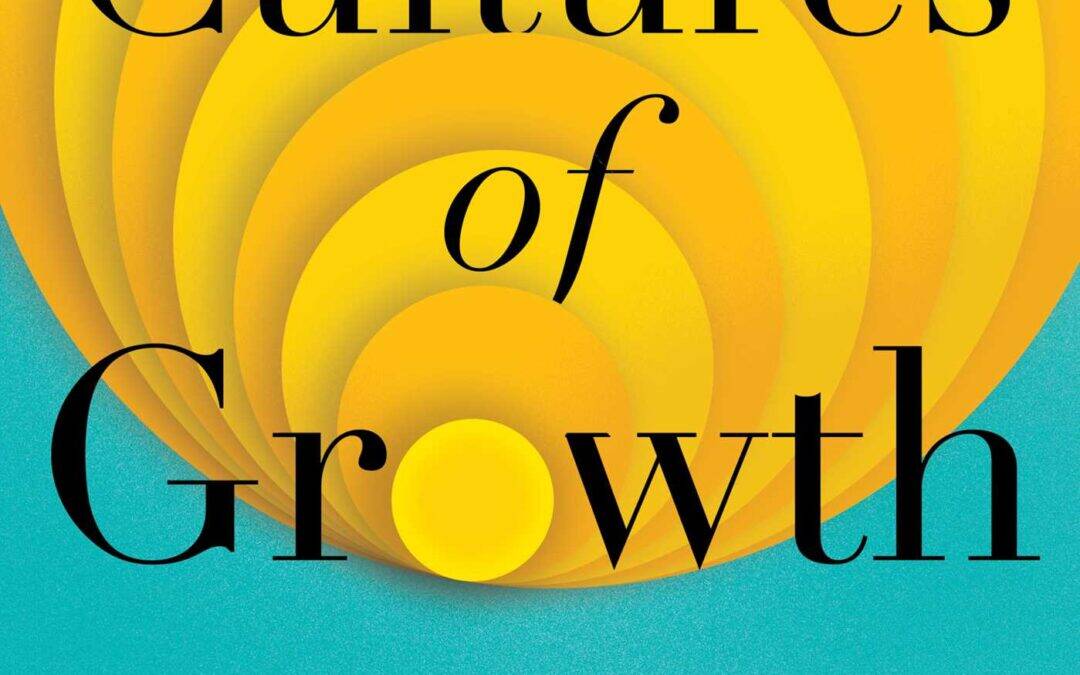What is important about this book
Cultures of Growth by Mary C. Murphy, explores the impact of organizational culture on personal performance and well-being.
Murphy’s conceptual references are Dweck’s studies that have shown that individuals function:
- with a fixed mindset, in which talent and intelligence are viewed as predetermined, innate traits (you either have it or you don’t) and lack of success as the absence of ability;
- or with a growth mindset, which realizes improvement through learning and collaboration, and views failure as an opportunity for growth;
and Amy Edmondson’s research findings that show how growth in Psychological Safety (understood as “absence of interpersonal fears”) translates into more than proportional growth in performance.
In this book Mary C. Murphy, summarizes more than a decade of her research, both qualitative and quantitative, carried out in major companies such as Patagonia, WeWork, Shell Oil, Atlassian and many others.
Murphy’s research shows that companies that develop a “Culture of Talent,” are characterized by high competition and focus on individuals, but stifle creativity, create stressful work environments and foster unethical behavior. Moreover, employees in these companies are less satisfied (40 percent) and less likely to take risks than employees in companies with a “Culture of Growth”.
The author emphasizes in various sections how easy it is to fall into the trap of labeling and judging individuals as “capable” or “incompetent” typical of the fixed mindset to avoid a co-responsible approach to growth, and, on the subject of Psychological Safety, how risk and conflict are instead welcome if well understood and aimed at improvement.
In a nutshell, according to Murphy, the Culture of Growth favors more attitudes of responsibility, the Culture of Talent widespread reactions of blaming the parties.
The author explains that our mindsets are not static: we all swing between a fixed mindset and a growth mindset depending on circumstances, introducing the concept of “mindset triggers”, i.e., situations that can push people toward a fixed or growth mindset. Organizations can influence these swings through targeted practices, knowing that there are “organizational bubbles” where one or the other of the cultures dominates.
One of the most provocative aspects of the book is that individual performance is influenced more by context than by personal capabilities, and focusing only on the individual while neglecting the surrounding environment limits the potential for both individual and organizational growth.
Quotes
- “Talent culture yields less talent”
- “Mindset is a continuum, not a fixed trait”
- “Organizational culture shapes individual mindsets”
- “Collaboration thrives in growth cultures”
- “Innovation is diffused in psychologically safe environments”
- “Risk-taking and resilience are cultivated through growth mindsets”
- “Diversity and inclusion are natural outcomes of growth-oriented cultures”
- “We want employees who are able to question what they consider bad decisions”
- “Failure is often the best teacher, and after handling the situation of error we need to double down on learning before moving on“
- ”Conflict pushes us out of our comfort zone and expands our awareness or thinking“
- ”The success of others can inspire rather than threaten”
Structure and content of the book
The book is divided into 3 parts:
- The Power of Mindset, where the two different corporate cultures, Talent and Growth, are explored and compared
- Rethinking (Internal) Competition, where Murphy explores the effects of internal competition within companies, highlighting its negative impact on individual and organizational health and showing instead, through success stories, different business models that prioritize collaboration over competition
- Promoting Growth Microcultures, where the author proposes viable strategies to initiate bottom-up transformation.
In order to evolve organizational culture, it must first be identified, and Murphy proposes to do so through five key factors:
- Collaboration: measures how well people work together rather than in competition.
- Innovation: tests whether companies encourage broad thinking or are cautious and limited in focus and share continuous and open review of data
- Risk-taking and resilience: examines whether people can experiment and learn from mistakes.
- Integrity and ethical behavior: assesses whether companies reward good behavior or shortcuts.
- Diversity, equity and inclusion: looks at how companies recruit and support diverse talent.
Instructions for Reading
Organizations that adopt the growth mindset become more resilient and competitive, and M. Murphy’s book clearly illustrates several methodologies of organizational change and staff (manager and non-manager) development.
From what to do to how to do it, from outcome to process, from resources to be acquired to resources that can already be activated at the individual, team and organizational levels. The generativity of change is played out in processes and in the awareness and discovery of how communities evolve and what organizational capabilities and values are actually activated or practiced.
Cultures of Growth provides practical tools for fostering a growth mindset in groups:
- Identifying mindset triggers: understanding situations that drive toward a fixed or growth mindset.
- Creating safe environments for learning: fostering the sharing of ideas without fear of judgment.
- Accept failure as part of the process: promote the idea that mistakes are opportunities for growth.
*The review was written in Italian by Maurizio Grassi and was translated into English by a PRIMATE consultant.
